Are you a first-grade teacher searching for exciting and effective ways to teach compound words? Look no further! In this article, we will explore a range of printable compound word activities for first-grade students designed to engage and excite your young learners. From engaging worksheets to interactive centers and creative writing exercises, we have you covered. But first, let’s discuss compound words.
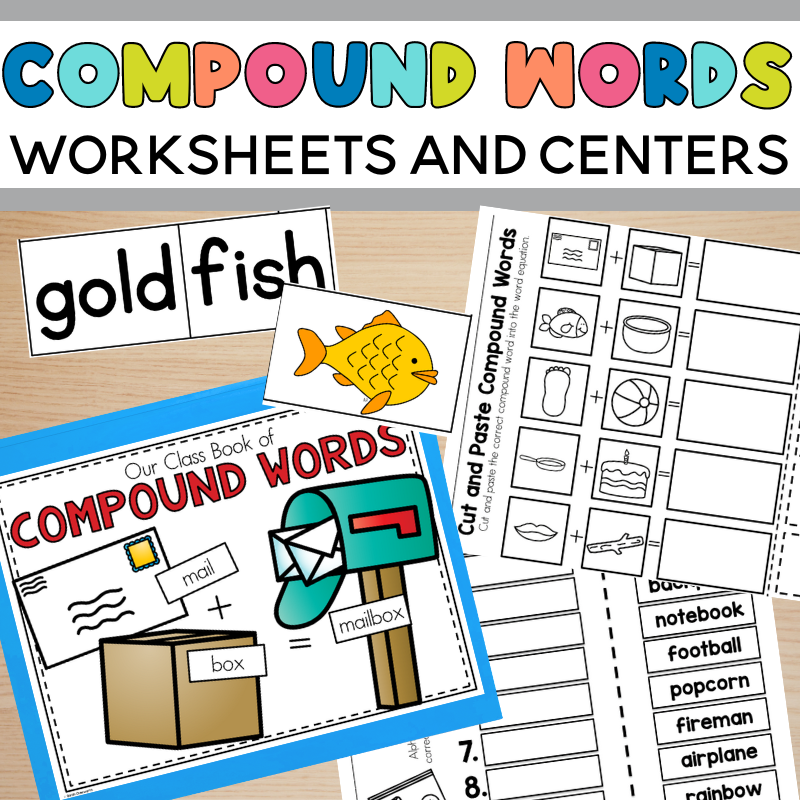
Compound words are included in many state teaching standards in 1st grade and 2nd grade. A compound word is a word made up of two (or more) words that come together to create a new bigger word. Usually, a compound word has two different word parts. “
Football” and “strawberry” are both examples of compound words. You can find a full list of compound words at the bottom of the post.
Compound words are formed when two or more words are combined to create a new word with a different meaning. Compound words often retain the meaning of the individual words, but they can also take on new meanings altogether.
Now that we understand the importance of compound words in language and vocabulary development, let’s look at a variety of engaging worksheets that will help your first-grade students master this concept.
These printable activities are designed to be a great resource for teachers. These printable worksheets are a great option for independent practice or even a quick assessment.
Compound Words Printable Worksheets
Cut and Paste Compound Words Worksheet
One activity you can try is the “Compound Word Match-Up.” On this worksheet, students will cut and paste the correct compound word into the word equation.
Students will look at two different word pictures and decide what compound word is created with those two words. Two different worksheets are included. Students will love solving these fun compound word equations!
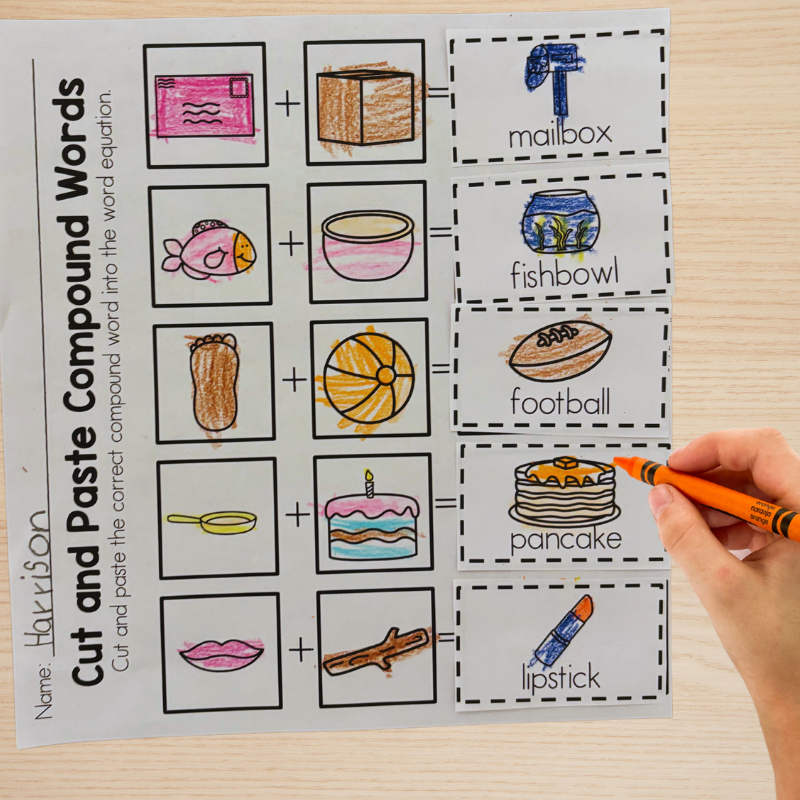
Students will also be developing fine motor skills by coloring, cutting and gluing this worksheet. This is a great worksheet to use for morning work!
ABC Order Compound Words Worksheet
This worksheet is a fun way to work on compound words and alphabetizing words. Students will cut apart the compound words and then glue them in ABC order.

By using these engaging worksheets in your first-grade classroom, you are providing your students with the tools they need to master compound words while fostering a love for learning.
The interactive nature of these activities will keep your students motivated and excited about language development. All of the worksheets shown are available in this resource, Compound Words Worksheets and Centers.
Compound Words Writing
Compound word writing can further enhance the learning experience by allowing students to apply their newfound knowledge practically and creatively. By engaging in creative writing activities, students can explore the concept of compound words in a creative and personalized manner.
One idea for a creative writing activity is to have students write sentences or paragraphs that incorporate compound words. Encourage them to use as many compound words as possible, highlighting their understanding of how two words can come together to form a new word with a different meaning. This activity not only reinforces their knowledge of compound words but also helps develop their storytelling skills and imagination. Students can write the compound word with a different color.
You can also provide students with pictures or word prompts and ask them to write a sentence or a short story incorporating compound words. For instance, show them a picture of a “rainbow” and ask them to write a sentence using a compound word related to the image, such as “The beautiful rainbow stretched across the sky.” This activity not only reinforces their knowledge of compound words but also encourages them to think creatively and expand their vocabulary.
Picture Cards
If you are doing this activity with ELL students, be sure to provide picture cards or vocabulary word cards for support. Compound word lists may also be a helpful reference! Many compound word pictures are included in Compound Word Worksheets and Centers.
Students could also draw a picture of compound words or even write the definition of a compound word. This can be a fun activity for early finishers or a challenge for students.
Incorporating creative writing activities into your compound word lessons not only reinforces students’ understanding of the topic but also provides them with an opportunity to express themselves and think critically. By engaging in these activities, students can develop their language skills, enhance their creativity, and deepen their comprehension of compound words.
Compound Words Class Book
Creating a class book of compound words is a great way to review this new skill!
First, print the class book cover and put it on the front of a folder or binder. Next, each student will complete one page for the book. Students will choose a compound word to illustrate. Students will write and draw a picture of the two words that make up that compound word; then the compound word.
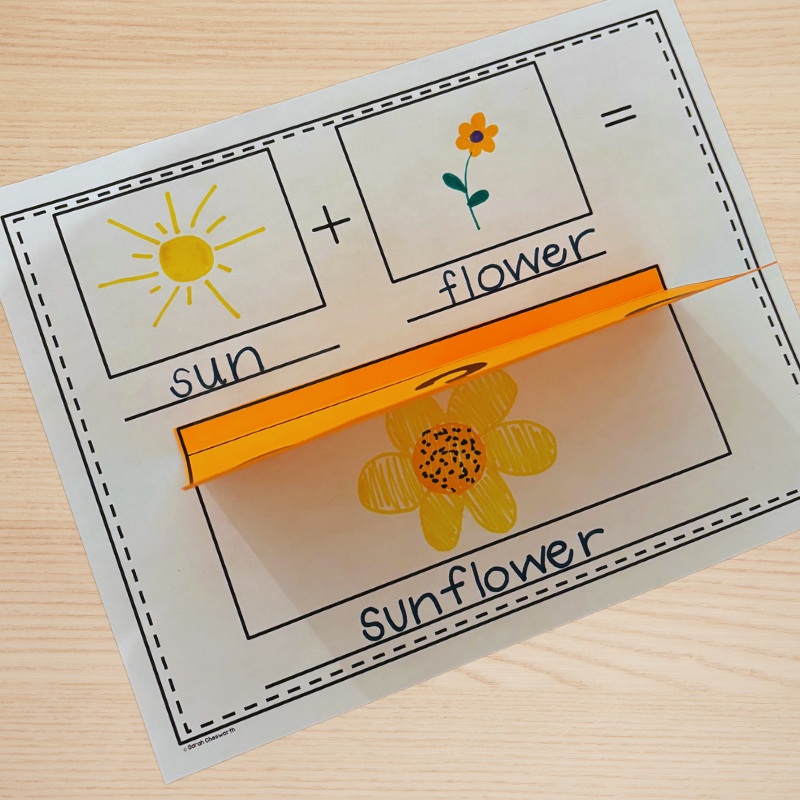
An optional tape or glue-on flap is included if you want to cover up the compound words so students can guess as they read the class book! You can help students with this in small groups or it can be completed as independent work.
Young readers will love enjoying this book over and over in the classroom library! This will also give them some extra practice reading compound words!
You can read more about class books in this post, How to Make Meaningful Class Books and Class Books to Make in Kindergarten.
Compound Words Centers
Center activities are one of the best ways for students to practice building and reading compound words. These fun compound word activities make learning more interactive by incorporating hands-on activities.
Compound Word Match Up Center
Young learners will love this simple center! Students will match up the words to create compound words; then find the corresponding picture. An answer chart is also included so students can check their work. This a great option for literacy centers and the pieces easily fit in a
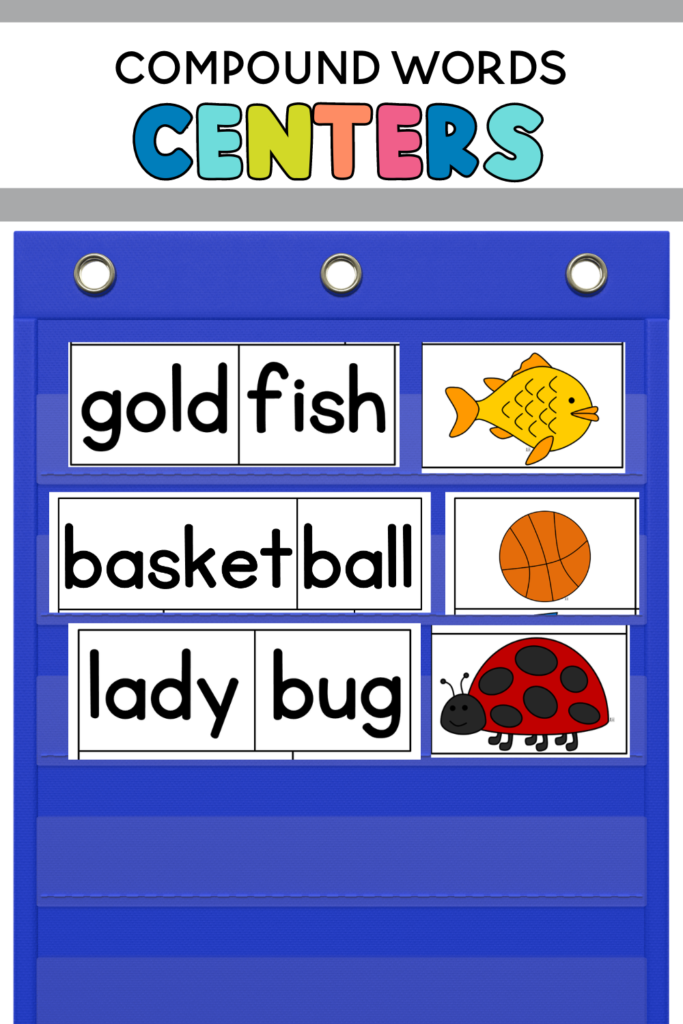
By physically manipulating these word pieces to create compound words, students can actively participate in the learning process. This is especially helpful for visual learners.
To further promote hands-on learning, you can use the pieces to create a “Compound Word Sensory Bin.” Fill a bin or container with the pictures and words. Students can dive into the sensory bin, explore the objects or pictures, and identify and create the corresponding compound words. This sensory experience adds a tactile and visual element to the learning process, making it more enjoyable and memorable for students.
Compound Word Sort
In this center, students will sort picture cards into two categories: Compound Words and Not Compound Words. An answer chart is also included so students can check their work. This is a great
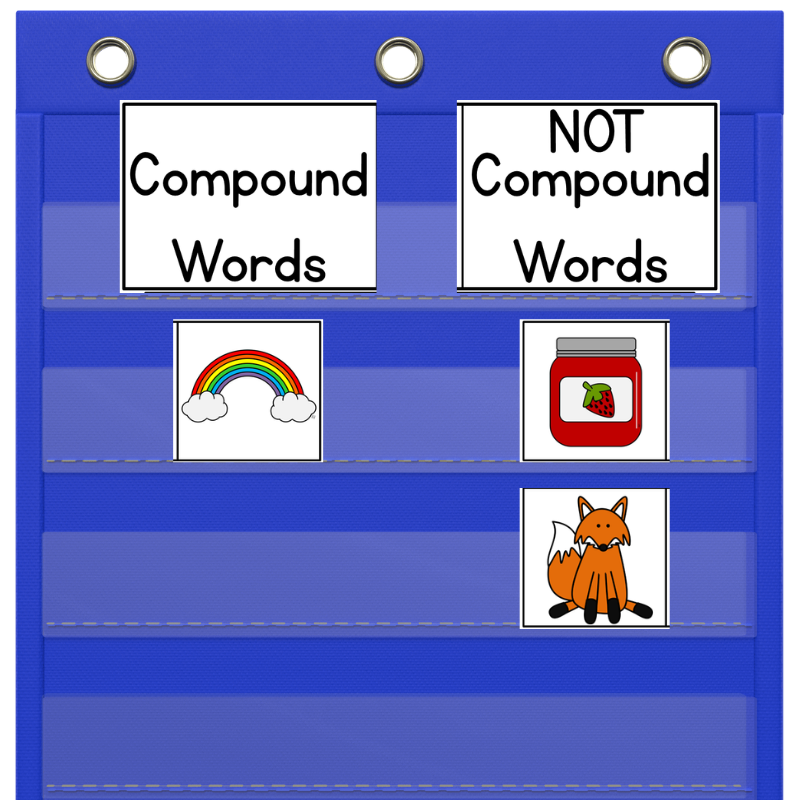
All of these centers are included in the resource, Compound Words Worksheets and Centers.
Frequently Asked Questions About Compound Words
What are compound words?
Compound words are created when two (or more) small words come together to form longer words.
While there are no strict rules for forming compound words, there are some patterns and guidelines that can be helpful to understand. For instance, most compound words are written as one word, but some are hyphenated or written as separate words. The key is to emphasize the meaning and clarity of the word rather than focusing on a specific rule. Reading and exposure to compound words will ultimately help your first-grade student develop a sense of how they are formed and used effectively.
Compound words can be classified into three main types: closed, hyphenated, or open compounds. Closed compounds are written as one word, such as “notebook” or “sunflower.” Hyphenated compounds, as the name suggests, are written with a hyphen between the individual words, like “self-esteem” or “mother-in-law.” Open compounds are written as separate words, such as “ice cream” or “high school.”
This post is focused on teaching closed compound words.
Why is learning compound words important?
Understanding compound words is essential for young learners as they begin to develop their vocabulary and language skills. Compound words are formed when two or more words combine to create a new word with a unique meaning. By joining together individual words, compound words can convey a more specific or nuanced concept. For example, when “butter” and “fly” come together, we get the compound word “butterfly,” which refers to a beautiful insect known for its delicate wings.
Recognizing compound words and understanding their structure can help children improve their reading and writing skills. By breaking down compound words into familiar components, young learners can easily decipher the meaning of unfamiliar words they come across. This ability to decode compound words enhances their fluency and comprehension, enabling them to express themselves more effectively in written and spoken language.
Understanding compound words is a crucial skill for young learners as it allows them to expand their vocabulary, improve their reading comprehension, and enhance their writing skills. By recognizing and using compound words, students can express themselves more effectively and communicate their ideas with clarity and precision.
Now equipped with a clear understanding of what compound words are and their importance, let’s move forward and explore some examples of compound words.
What are some examples of compound words?
Compound words are all around us, and once you start looking for them, you’ll notice them everywhere! Some familiar examples of compound words include “playground,” “sunflower,” “raincoat,” “cupcake,” and “toothbrush.” Encourage your first-grade student to keep a running list of compound words they encounter in their daily life, and discuss their meanings together.
List of Compound Words
- Armchair
- Backpack
- Baseball
- Basketball
- Bathtub
- Birdhouse
- Blackbird
- Butterfly
- Chalkboard
- Cowboy
- Cowgirl
- Cupcake
- Dog House
- Doorbell
- Dragonfly
- Doghouse
- Earrings
- Earthworm
- Firefighter
- Fireman
- Fishbowl
- Football
- Goldfish
- Horseshoe
- Hotdog
- Jellyfish
- Ladybug
- Lipstick
- Mailbox
- Milkshake
- Notebook
- Pancake
- Pineapple
- Popcorn
- Playground
- Rainbow
- Raincoat
- Rattlesnake
- Sandbox
- Seahorse
- Seashell
- Strawberry
- Skateboard
- Snowman
- Sunflower
- Sunglasses
- Sunshine
- Swordfish
- Toothbrush
- Treehouse
- Woodchuck
When are compound words taught?
Typically compound words are taught in 1st grade and 2nd grade. However, practice with them may continue into 3rd grade and beyond. Check your state’s English language arts standards and curriculum for more guidance on when to teach compound words to your students.
What are some great ways to teach compound words?
There are numerous ways you can support your first-grade student in mastering compound words. Encourage them to explore compound words in their reading materials and identify them in sentences or paragraphs. You can also provide them with word-building activities where they can combine two smaller words to form a compound word. Additionally, incorporating interactive and engaging activities, like the worksheets, and centers activities in this post will help your students learn compound words!
When teaching compound words to first graders, it’s important to make the learning process engaging and interactive.
To reinforce their understanding of compound words, it is crucial to give children ample practice opportunities. You can create worksheets or even interactive online games where they can identify and create compound words. This practice will help solidify their knowledge and build confidence in their ability to recognize and use compound words correctly.
In addition to hands-on activities, incorporating games and group activities can make learning compound words an enjoyable experience for first graders. Word matching games, word scavenger hunts, or even compound word bingo can provide a fun and interactive way for children to expand their vocabulary while reinforcing the concept of compound words. By making the learning process enjoyable, you’ll spark their enthusiasm and motivation to learn more.

Teaching Compound Words
In conclusion, the best way to teach compound words to first graders involves a combination of worksheets, hands-on activities, ample practice, and interactive centers. By using these methods, children can develop a solid understanding of compound words, allowing them to confidently incorporate them into their language repertoire. This foundation will not only enhance their reading and writing skills but also set them up for future language exploration and learning.
I hope you’ll enjoy using these compound words activities for first grade!
